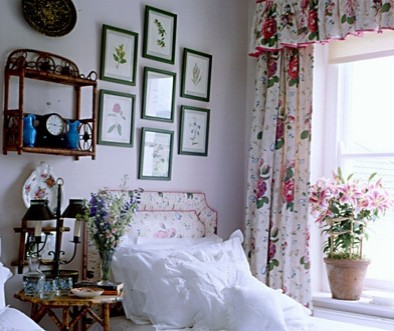Natural Bonsai-- the Beautiful Decoration of Chinese Classical study
The fengshui layout of the study that affects the fate is worthy of your attention, and the study is an important part of the residential environment. The study is not only an extension of office space, but also a part of home life.
The study should be full of bookish atmosphere, the choice of plants should not be too much, and it is more appropriate to watch foliage plants or elegant potted flowers. The study with smaller space can choose small pine and cypress plants that are short, evergreen and green all the year round, such as asparagus, five-needle pine and so on.

The elegant Chinese classical study is inseparable from the natural embellishment of green rhyme, especially the literati are good to put a pot of bonsai in their study for many years. It is not only a refreshing spirit for the whole space, but also an elegant state of mind and poetic expression.
Ginkgo biloba-the spiritual sustenance of literati
Ginkgo biloba, which has experienced wind and rain, is most loved by ancient and modern literati. Its posture is ancient, the momentum is majestic, the trunk is Qiu qu, lush and solemn. Graceful ginkgo biloba is processed into bonsai, the heroic posture of ginkgo biloba in nature is concentrated in a bowl, the roots are slightly exposed, the branches and leaves are slightly shaped and trimmed, classical and elegant, wild and interesting, the summer is vigorous and green, and the golden autumn is handsome and golden. The settlement desk placed in the Chinese-style study is pleasing to the eye.
Taxus mairei-the national treasure in bonsai
Yew, also known as yew, after thousands of years of wind and frost, resolutely transformed into today's glamorous generation. Taxus is evergreen all the year round, green and elegant, the age of the tree is very long, still exuberant for hundreds of years, so it is called "longevity tree". It is dry and straight, the tree is graceful, and the seed coat is red and bright when the seed is ripe, so it is an excellent bonsai and greening tree species. Nowadays, if there is a yew bonsai in the Chinese style study, it will be the envy of the guests. Scarce things will be put in a conspicuous place at home, and the desk in the study is the best. It can not only be eye-catching, but also purify the air, make people breathe smoothly and prolong life.
Elm-A metaphor for people with trees
The literati who leave the bonsai idle at home will always reflect the nobility of ideological quality. Elm trees like light, drought tolerance, cold tolerance, barren tolerance, no choice of soil, highly developed root system, resistance to pruning, fast growth and long life. The old piles of elm trees growing in the wild have gradually formed many different strange postures after years of man-made chopping axe chisels, or wind and rain erosion, and animal bites. Elm sprouting power is naturally strong, intertwined, vigorous and simple; some turn decay into magic, withered roots and new leaves, a unique hole in the sky. Most of the ancient Chinese bachelor's families planted elm trees to warn themselves. Therefore, perseverance through the vicissitudes of life is not only the nature of the elm, but also the moral character that the literati attach great importance to.
Bonsai-the most beautiful scenery of Chinese classical study
Moving the natural scene into a basin close at hand to form an ideal three-dimensional picture that imitates nature and transcends the original shape of the mountain is called bonsai. The beauty of bonsai, such as the ancient Zen songs of deep and quiet stone bells, the lingering Zen paintings of ink paintings, and the cadence of heavenly Zen poems, are light, empty and quiet. The temperament contained in the green bonsai coincides with the inner feelings of seclusion, elegance, emptiness and emptiness of the literati, so the bonsai is placed in the Chinese study to add a corner of serenity and an elegant room.
Miniature bonsai composed of succulent succulent plants with exquisite and bright colors can be placed on the bookshelf to enrich the color of the study; on the writing desk, exquisite small foliage plants can be placed, such as all kinds of pepper grass, mirror grass, reticulate grass, bluegrass, taro and so on. Make the owner of the study enjoy the plants after long and tense mental work, so as to relax the nerves, adjust eyesight, relieve drowsiness and improve the efficiency of study and work.
Generally speaking, the desk is placed in the Wenchang position, which is the best choice, but from the point of view of numerology, it is best to combine the god arrangement of the master's birthday, because if Wenchang likes to use God, everyone will be happy. if Wenchang happens to be a taboo god, then the position should be changed, which is the same in the choice of study location. Generally speaking, the position of the desk should be auspicious, while the position of the bookcase should be placed in the evil position, which can suppress evil spirits. In addition, because the books are heavier, the bookcase must be sturdy in order to avoid danger.
Because the orientation of the desk determines the placement of the seat, that is, we should pay attention to the influence of backing behind it. In addition, it is also very necessary to choose a comfortable seat, and it is a good choice to choose a seat that can be flexibly adjusted. By adjusting the pitch angle of the backrest, you can properly alleviate the fatigue and stiffness caused by sitting for a long time, inactivity and so on.
Time: 2019-06-13 Click:
- Prev

The feng shui taboo of putting peach blossom bonsai in the bedroom
There is no inseparable couple, only the other woman who doesn't work hard. The existence of a third party is always based on the destruction of the relationship between husband and wife, in which the entanglement of love and hate is really not clear. It can only be said that rotten peach blossoms are everywhere, and we can only cut the grass and root. So, let's take a look at it together.
- Next

The principle of placing bonsai plants in the study
With the improvement of people's living conditions, the meaning of home is not only a place for people to take shelter from the wind and rain, but also living rooms, bedrooms, studies, teahouses and so on. The functions of different areas are becoming more and more clear. Due to the different functions, its decorative style, especially for the selection and decoration of plants
Related
- Fuxing push coffee new agricultural production and marketing class: lack of small-scale processing plants
- Jujube rice field leisure farm deep ploughing Yilan for five years to create a space for organic food and play
- Nongyu Farm-A trial of organic papaya for brave women with advanced technology
- Four points for attention in the prevention and control of diseases and insect pests of edible fungi
- How to add nutrient solution to Edible Fungi
- Is there any good way to control edible fungus mites?
- Open Inoculation Technology of Edible Fungi
- Is there any clever way to use fertilizer for edible fungus in winter?
- What agents are used to kill the pathogens of edible fungi in the mushroom shed?
- Rapid drying of Edible Fungi

